Abstract
The effect of route of administration of contact sensitizers on the induction of antigenic competition between dinitrofluorobenzene (DNFB) and picryl chloride (PCl) and between oxazolone (Ox) and PCl was investigated. Antigenic competition (depressed contact sensitivity to PCl) was induced not only by painting with DNFB via various routes, such as intravenous (i.v.), oral or subcutaneous routes. Antigenic competition was abolished by the treatment with cyclophosphamide (CY) 4 days after i.v. injection of competing DNFB or Ox, and also by thymectomy 6 weeks prior to the injection of DNFB. These results suggest that thymus-derived suppressor cells may be involved in the antigenic competition induced by the i.v. injection of DNFB. Primary contact sensitivity (CS) was induced by painting of DNFB or Ox and also by i.v. injection of Ox. Although an i.v. injection of DNFB into normal mice did not induce CS, it induced a strong CS in the mice pretreated with CY 2 days prior to the injection of DNFB. Examination on the effect of dose of contact sensitizers on the induction of antigenic competition, primary CS and tolerance by painting or by i.v. injection of DNFB or Ox showed that the degree of antigenic competition has a closer relationship with CS, than with unresponsiveness.
Full text
PDF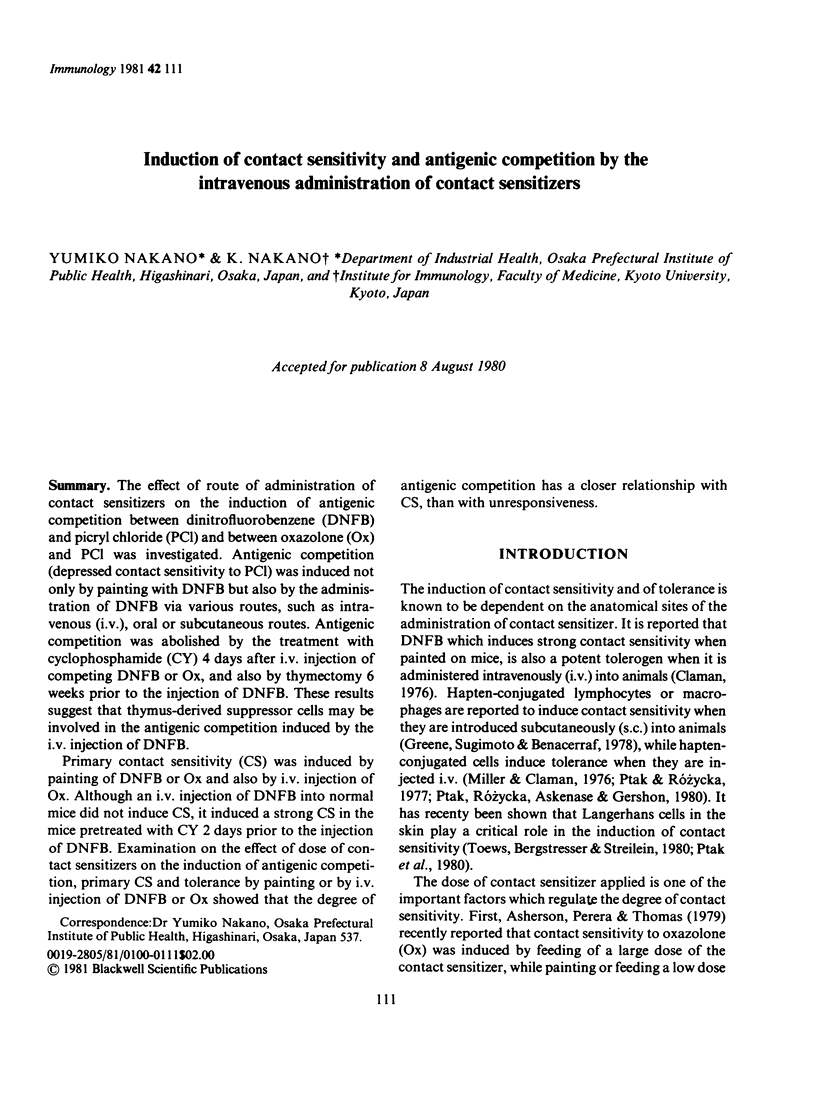
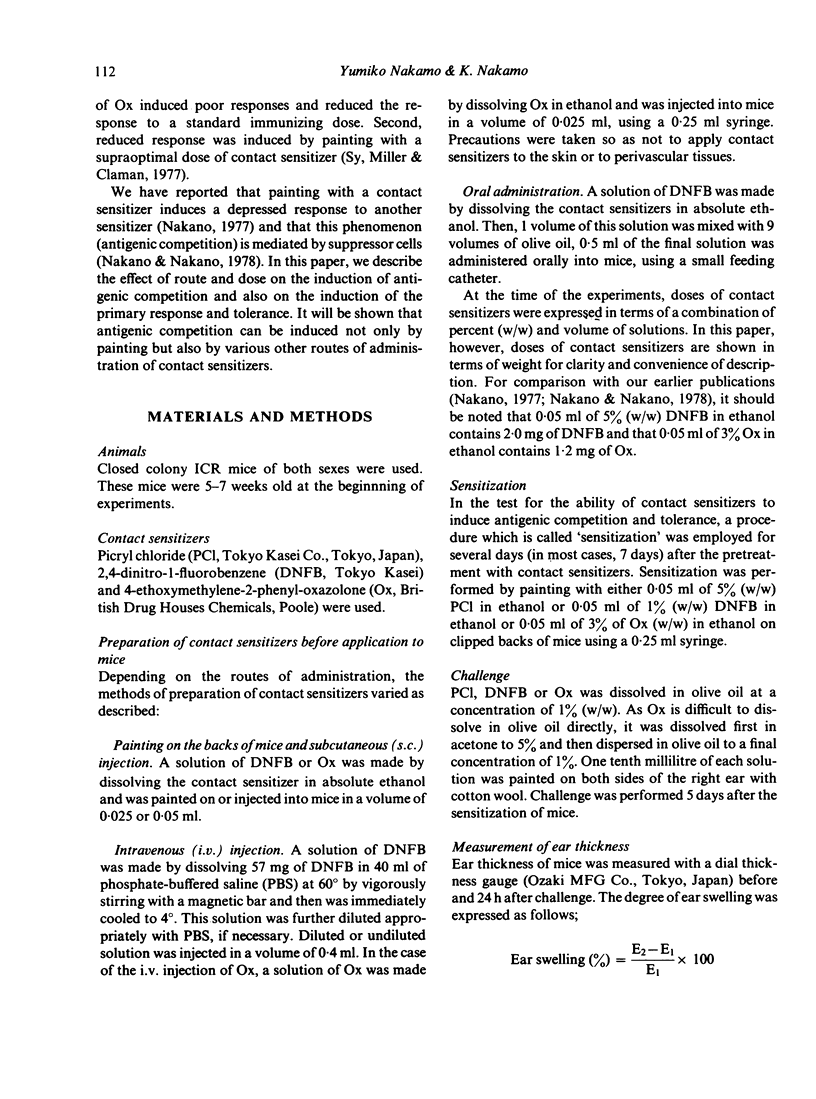
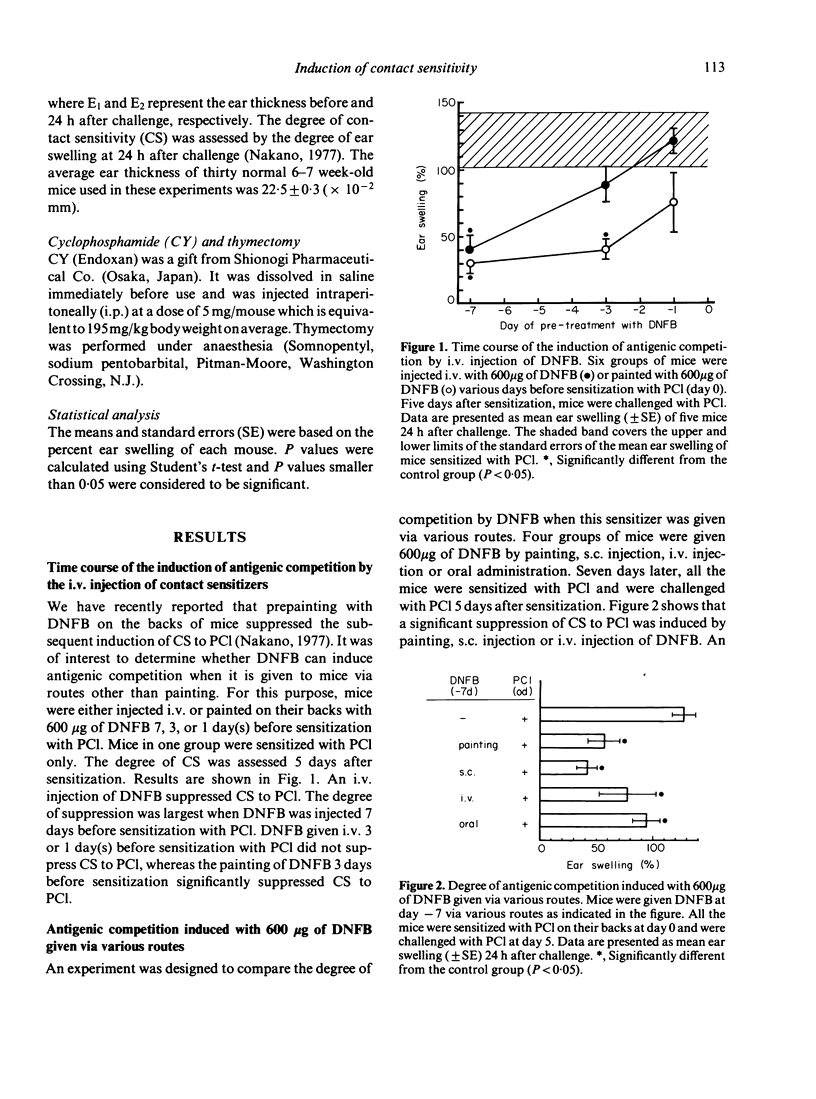
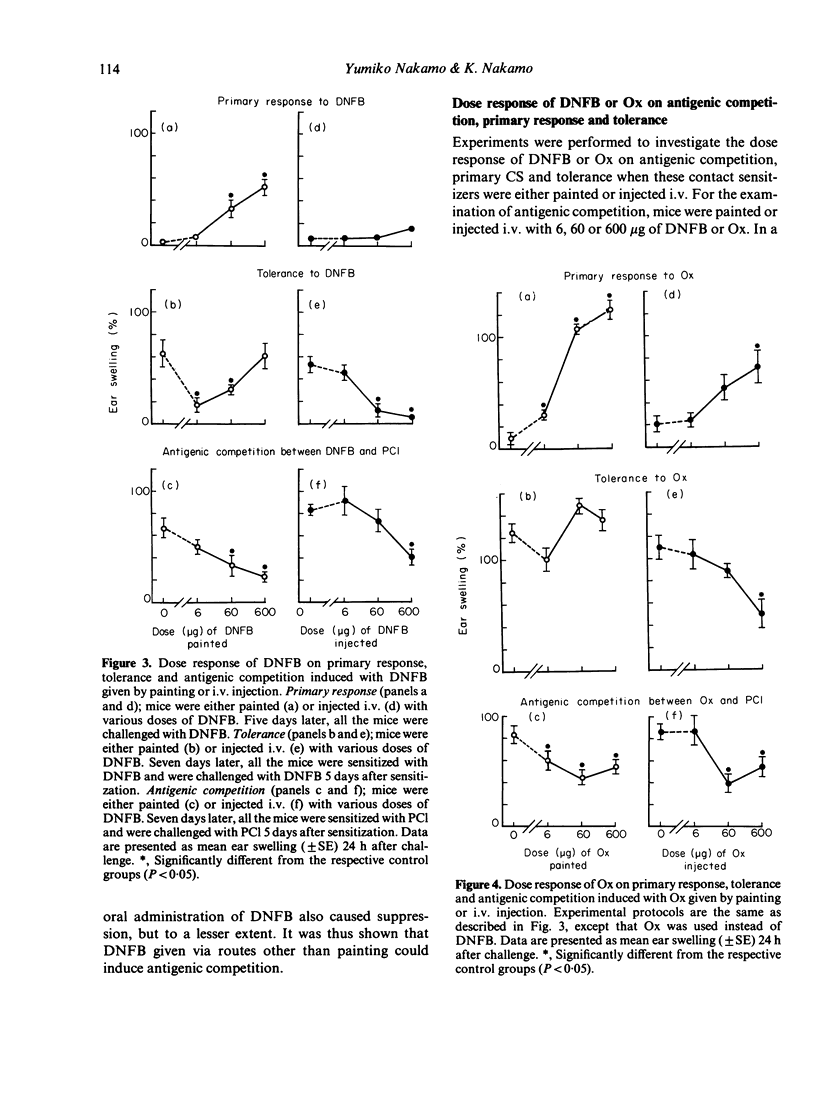
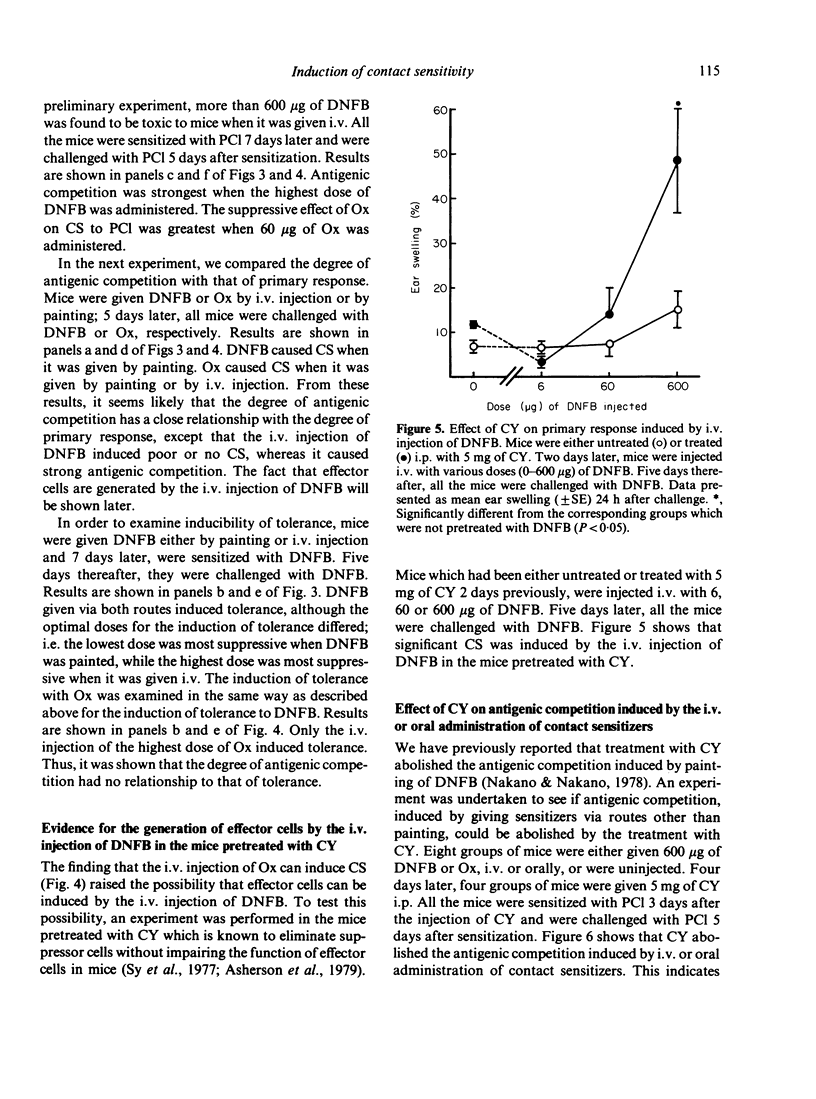
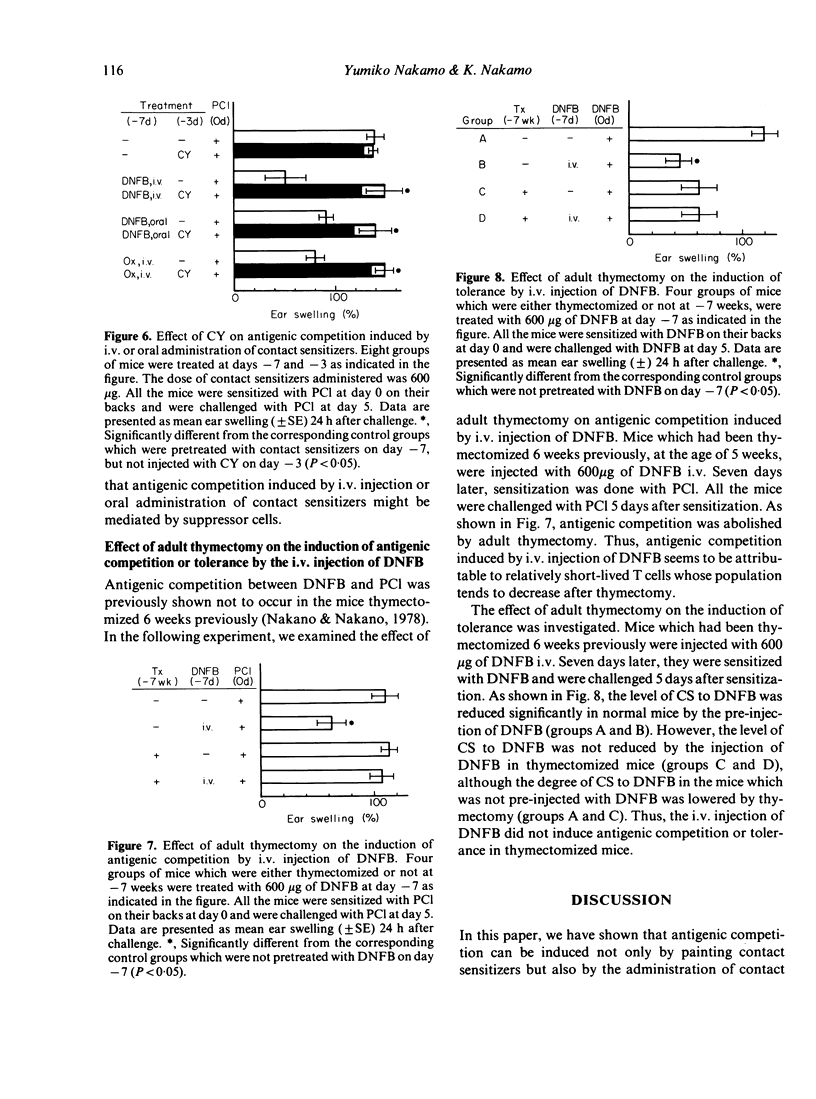
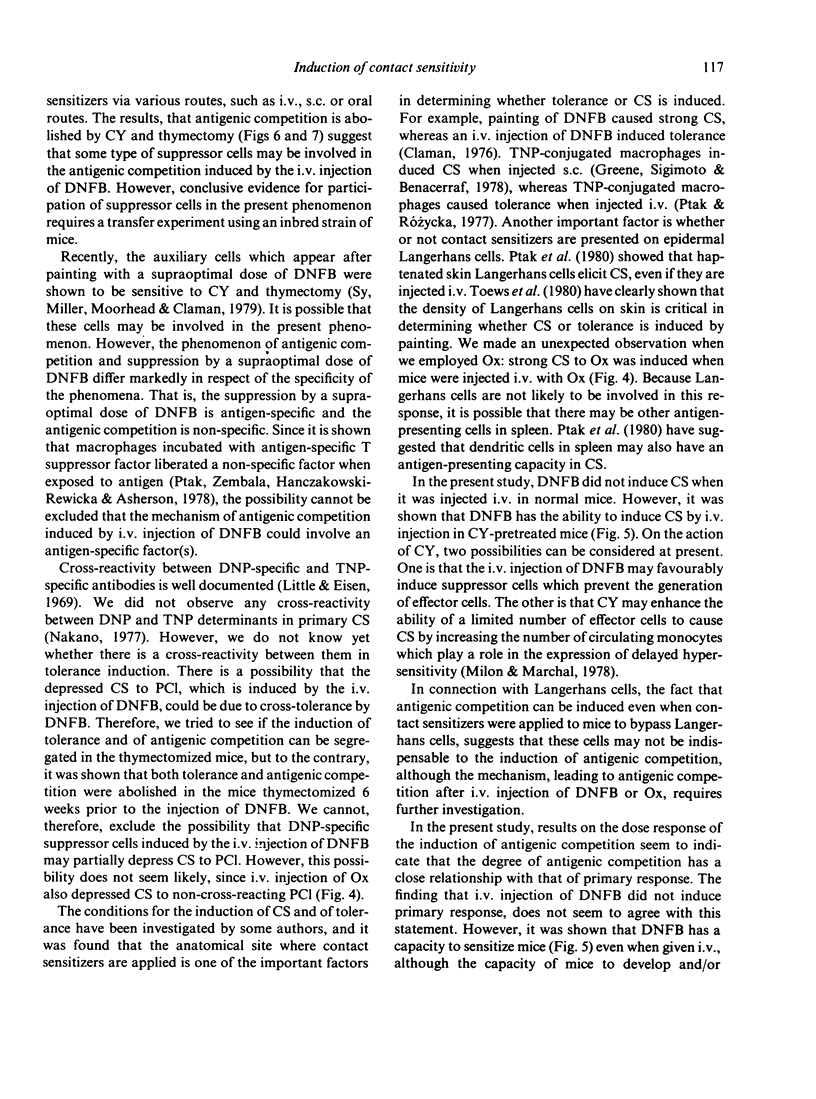
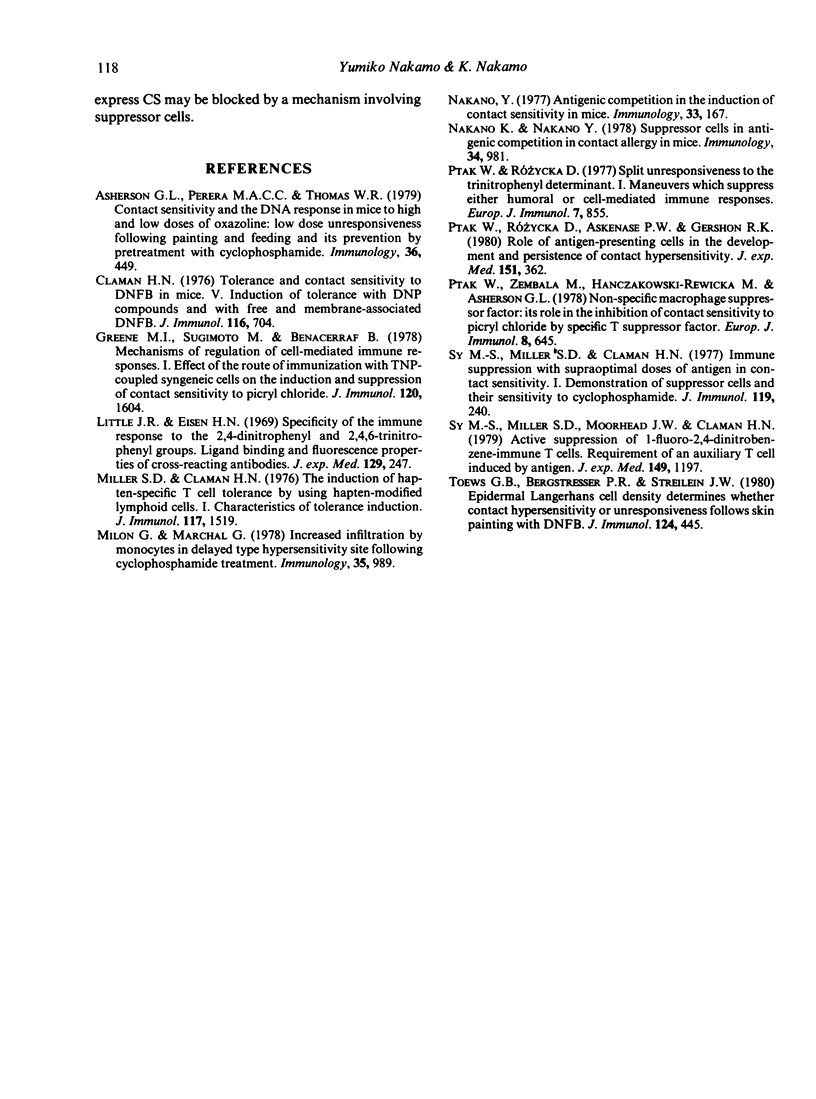
Selected References
These references are in PubMed. This may not be the complete list of references from this article.
- Asherson G. L., Perera M. A., Thomas W. R. Contact sensitivity and the DNA response in mice to high and low doses of oxazolone: low dose unresponsiveness following painting and feeding and its prevention by pretreatment with cyclophosphamide. Immunology. 1979 Mar;36(3):449–459. [PMC free article] [PubMed] [Google Scholar]
- Claman H. N. Tolerance and contact sensitivity to DNFB in mice. V. Induction of tolerance with DNP compounds and with free and membrane-associated DNFB. J Immunol. 1976 Mar;116(3):704–709. [PubMed] [Google Scholar]
- Greene M. I., Sugimoto M., Benacerraf B. Mechanisms of regulation of cell-mediated immune responses. I. Effect of the route of immunization with TNP-coupled syngeneic cells on the induction and suppression of contact sensitivity to picryl chloride. J Immunol. 1978 May;120(5):1604–1611. [PubMed] [Google Scholar]
- Little J. R., Eisen H. N. Specificity of the immune response to the 2,4-dinitrophenyl and 2,4,6-trinitrophenyl groups. Ligand binding and fluorescence properties of cross-reacting antibodies. J Exp Med. 1969 Feb 1;129(2):247–265. doi: 10.1084/jem.129.2.247. [DOI] [PMC free article] [PubMed] [Google Scholar]
- Miller S. D., Claman H. N. The induction of hapten-specific T cell tolerance by using hapten-modified lymphoid cells. I. Characteristics of tolerance induction. J Immunol. 1976 Nov;117(5 Pt 1):1519–1526. [PubMed] [Google Scholar]
- Milon G., Marchal G. Increased infiltration by monocytes in delayed type hypersensitivity site following cyclophosphamide treatment. Immunology. 1978 Dec;35(6):989–995. [PMC free article] [PubMed] [Google Scholar]
- Nakano K., Nakano Y. Suppressor cells in antigenic competition in contact allergy in mice. Immunology. 1978 Jun;34(6):981–987. [PMC free article] [PubMed] [Google Scholar]
- Nakano Y. Antigenic competition in the induction of contact sensitivity in mice. Immunology. 1977 Aug;33(2):167–178. [PMC free article] [PubMed] [Google Scholar]
- Ptak W., Rozycka D., Askenase P. W., Gershon R. K. Role of antigen-presenting cells in the development and persistence of contact hypersensitivity. J Exp Med. 1980 Feb 1;151(2):362–375. doi: 10.1084/jem.151.2.362. [DOI] [PMC free article] [PubMed] [Google Scholar]
- Ptak W., Rózycka D. Split unresponsiveness to the trinitrophenyl determinant. I. Manoeuvers which suppress either humoral or cell-mediated immune responses. Eur J Immunol. 1977 Dec;7(12):855–860. doi: 10.1002/eji.1830071207. [DOI] [PubMed] [Google Scholar]
- Ptak W., Zembala M., Hanczakowski-Rewicka M., Asherson G. L. Nonspecific macrophage suppressor factor: its role in the inhibition of contact sensitivity to picryl chloride by specific T suppressor factor. Eur J Immunol. 1978 Sep;8(9):645–649. doi: 10.1002/eji.1830080908. [DOI] [PubMed] [Google Scholar]
- Sy M. S., Miller S. D., Claman H. N. Immune suppression with supraoptimal doses of antigen in contact sensitivity. I. Demonstration of suppressor cells and their sensitivity to cyclophosphamide. J Immunol. 1977 Jul;119(1):240–244. [PubMed] [Google Scholar]
- Sy M. S., Miller S. D., Moorhead J. W., Claman H. N. Active suppression of 1-fluoro-2,4-dinitrobenzene-immune T cells. Requirement of an auxiliary T cell induced by antigen. J Exp Med. 1979 May 1;149(5):1197–1207. doi: 10.1084/jem.149.5.1197. [DOI] [PMC free article] [PubMed] [Google Scholar]
- Toews G. B., Bergstresser P. R., Streilein J. W. Epidermal Langerhans cell density determines whether contact hypersensitivity or unresponsiveness follows skin painting with DNFB. J Immunol. 1980 Jan;124(1):445–453. [PubMed] [Google Scholar]


